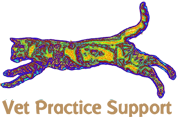- Home
- Information for pet owners regarding portosystemic shunt surgery
Information for pet owners regarding portosystemic shunt surgery
Portosystemic shunt surgery owner information.docx (1)
‘Liver shunts’ are abnormal blood vessels which allow blood returning from the gut to bypass the
liver and run directly into the general circulation. Surgery aims to close these vessels and divert
flow back through the liver.
Risks:
As with all anaesthetics there’s always a small risk of serious adverse consequences (including
death) due to general anaesthetic complications. And, as with all surgery, some risk of wound
complications such as infection or wound breakdown.
More specifically, with vascular surgery there’s a small risk of life-threatening bleeding.
In reality, the main risk with shunt surgery is of post-operative neurological complications. This can
happen even a week or two after surgery -causing seizures, confusion, incoordination, coma and
death (or signs so severe that euthanasia is necessary). Unfortunately we don’t have a failsafe way
of preventing this problem. Regardless of how the surgery is done, the risk of neurological
complications is about 10% and half of these prove fatal.
https://www.vetpracticesupport.com/tag/postligation-neurological-syndrome/
It’s important to be aware that treatment for neurological complications often involves
hospitalisation and 24 hour intensive care. This can be very demanding and expensive: often
costing more than the original surgery.
It’s important to assess this risk in relation to the potential benefits of surgery. Some dogs can live
quite happily for many years with a shunt on medical treatment and dietary control without
surgery. In others a shunt can affect quality of life in subtle ways. There’s a review of this debate
here:
https://www.vetpracticesupport.com/portosystemic-shunts-to-operate-or-not-to-operate/
Surgery does not guarantee a complete solution to the problems associated with shunts. Some
dogs continue to have problems despite the op. Happily this isn’t usually a big problem but it’s
important to be aware that other shunts can open up or that closure of the original shunt vessel
may not be complete. In this kind of situation, long-term medical treatment may be necessary
despite surgery.
If you have any questions about this then please ask to speak to me directly: it’s always important
to be completely clear about what we’re getting into before making decisions.
Roger Wilkinson
MRCVS MA VetMB CertVD Cert SAM PgC (Small animal cardiology
Most Popular Articles
Categories
- Another Category (1)
- cardiology (55)
- dermatology (16)
- Internal medicine (231)
- ultrasonography (212)
- Uncategorized (135)





